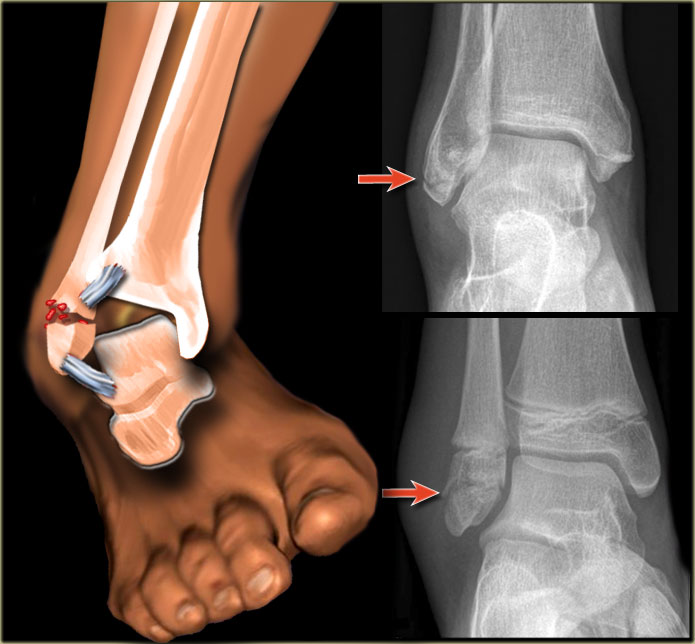An ankle injury may result into ankle fracture which can range from a simple chip fracture to full thickness breaks that may involve one or multiple bones. Fractures usually happen when the ankle gets over twisting in such force that bones tend to snap. They also happen due to stress fracture and direct trauma.
Ankle fractures (or broken ankle) happen when the two leg bones, tibia and fibula, break. The break which happens to one or both bones can be partially through the bone or completely through the bone, rendering discontinuity of the bone segment. In serious cases, the bone can either be crushed or pulverized depending on the trauma it has received.

Management of Acute Ankle Injury
An ankle fracture is characterized by pain, redness, swelling, skin blisters, bad ankle shape and—of course—the inability to bear body weight. The injury can then be managed through Rest, Ice, Compression, Elevation (otherwise known as RICE). While seeking for medical attention, it is best for the patient not to walk around and stress the injured ankle. A splint or ankle brace may also be applied to temporarily stabilize the ankle. Apply ice or ace wrap dressing to lessen the swelling. However, if there is an open fracture, the patient must immediately be admitted to surgical emergency. Even those who have mild fracture must also see a doctor immediately to avoid serious long-term effect/s.
Casting vs. Surgery
Not all ankle fractures can be treated through surgery. Depending on their classification schemes observed by the doctor or health expert, they could decide which method to use to mend the fracture. Their observations commonly depend on these three main categories:
- Separated Broken Bone
Broken bones, in order to heal together, should be close to each other. When the bone has been broken and separated apart, the experts can be able to bridge the two so it can heal. However, if the distance is too great, the bone may not heal together and may cause a great deal of pain.
- Displaced Bone
This type of fracture is strongly recommended for surgery since bones that mend in wrong position may make ankle joints susceptible to abnormal biomechanical forces that can wear out the ankle joint and may result to arthritis.
- Unsteady Fractured Ankle
This one is also highly recommended for surgery since the breaks can interfere with the structural ability of the ankle. Such unstable breaks may shift or be displaced during the healing process.
